
Tandem Skydiving
![]()
I already had been skydiving three times before 29 January 2013, all three when I was between 19 and 21, all from an altitude of 3000 feet, using the old-style dome parachutes, and all static line jumps, which means that a cord pulls the parachute open as you exit the plane. There is no more than three seconds of free fall with a static line jump, and it takes the human body approximately ten seconds to reach terminal velocity, the speed at which it can go no faster through the atmosphere. I wanted the experience of terminal velocity. I wanted to know what it felt like to fall to the Earth at a speed of 120 miles per hour!
Only two options were open to me to achieve my goal of reaching terminal velocity: (1) getting extensive and time-consuming training, or (2) do a tandem dive. In a tandem sky dive, one diver is securely strapped to an experienced skydiver who is wearing the parachute and controls all of the operations of the flight. I decided to try the experience of a tandem flight, from an altitude of 15,000 feet, with about 65 seconds of free fall. At 120 miles an hour.
Three times I had been on the schedule for tandem skydiving in Queenstown, and all three times the engagements were cancelled because of excessive wind at jump altitudes. The experience of parasailing a few days earlier had made me only more determined to go skydiving. My tour group was leaving Queenstown. I knew I would be back in a few days on my solo driving trip of the southern island.
I had a spare afternoon in Wanaka, and mentioned to my host, Gary, at the Minaret Lodge (highly recommended) my frustrated attempts to go skydiving when I had been in Queenstown. He said a company on the outskirts of Wanaka offered skydiving. After one phone call and five minutes, I finally was scheduled for the dive that had been blocked three times in Queenstown. I did not hesitate; even though I still was not quite accustomed to "driving on the wrong side of the road" I hopped in the car and sped off towards the dive site.
Skydive Wanaka promises to strap you to a beautiful stranger for your jump. I joked with the experienced skydiver who was going to be my partner that while he wasn't particularly beautiful, but he did look like he could take me on a death-defying plummet and get me back to ground safely. I said that was more important than being beautiful.
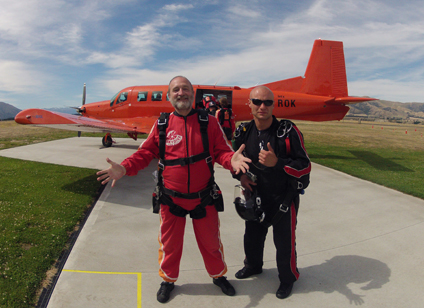 |
I'd rather jump with a badass stranger than a beautiful one! |
Again I was taught the lesson of frustrated plans leading to even better adventures later. Queenstown is beautiful, no question, but the Lake Wanaka area is even more spectacular, lying at the base of the mountain range that includes the towering and glacier-bound Mount Cook, New Zealand's highest peak.
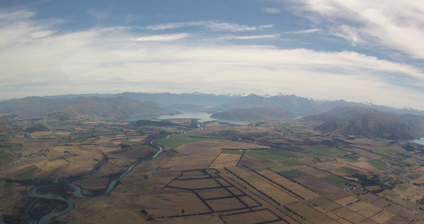 |
and Mount Cook in the distance |
As we climbed above 10,000 feet, we were given oxygen masks. They weren't necessary -- none of the experienced skydivers needed them -- but it was a precaution to make the passengers as comfortable as possible during the flight.
 |
but the air was beginning to get thin and the oxygen felt good. |
Then after about a 20 minute flight we were at 15,000 feet -- my instructor had been showing me his altimeter as we ascended to the drop zone -- and it was time to go.
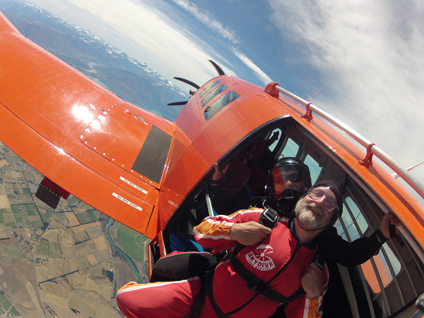 |
A small parachute called the pilot chute is deployed. This keeps everyone oriented properly, with me on the bottom facing the earth, and the instructor on my back with the main parachute ready to be deployed when the free fall ended.
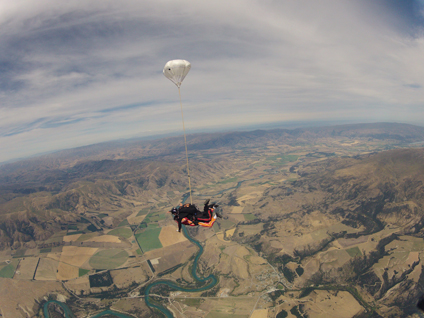 |
it only ensures proper orientation of everyone |
At 120 miles per hour, the power of the wind really does cause your cheeks to flutter!
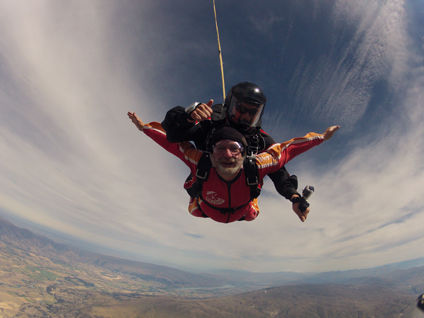 |
I'll take this over dirty dancing any day! |
Although the sound of our rapid descent was noisy, the sound track in my head was U2's Beautiful Day. I could not imagine I would ever see anything as beautiful as what my eyes beheld that day as I looked down on Lake Wanaka and Mount Cook
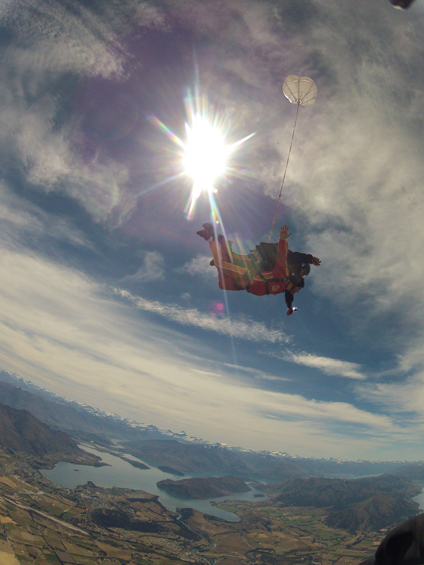 |
in the most beautiful of places |
But as one of my ex-partners was so fond of saying, "Nothing good lasts forever," after after 65 seconds of free fall as 120 mph, having come from 15,000 to 3,000 feet from the ground, it was time to deploy the main chute.
 |
After the main chute deployed, I continued to take in the breathtaking views of the Lake Wanaka region in silence, because the rushing wind no longer filled my ears. After five minutes of a peaceful descent, we came in for a smooth landing.
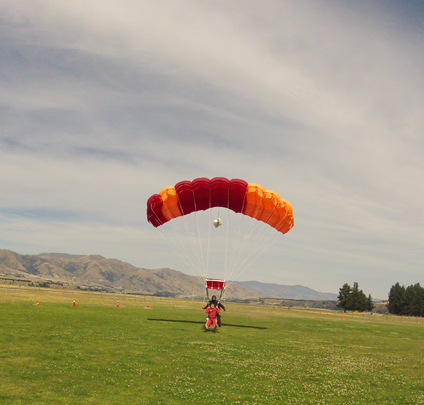 |
When I was asked how had I enjoyed my dive, I said that I was ready to go again.
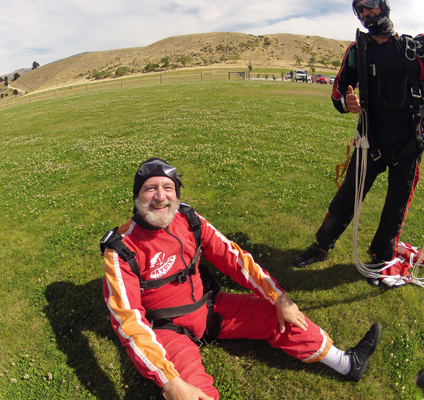 |
Remember, folks: trust the badass stranger to get you to safety from 15,000 feet to sea level!
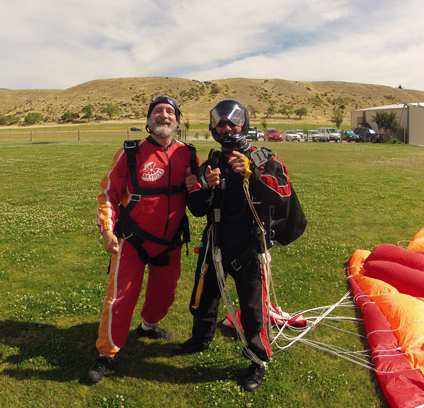 |
![]()
| Previous |
![]()
Please use the links below to reach other areas of this site:
Last revised: July 27, 2015.

| Contact Me | About Me |